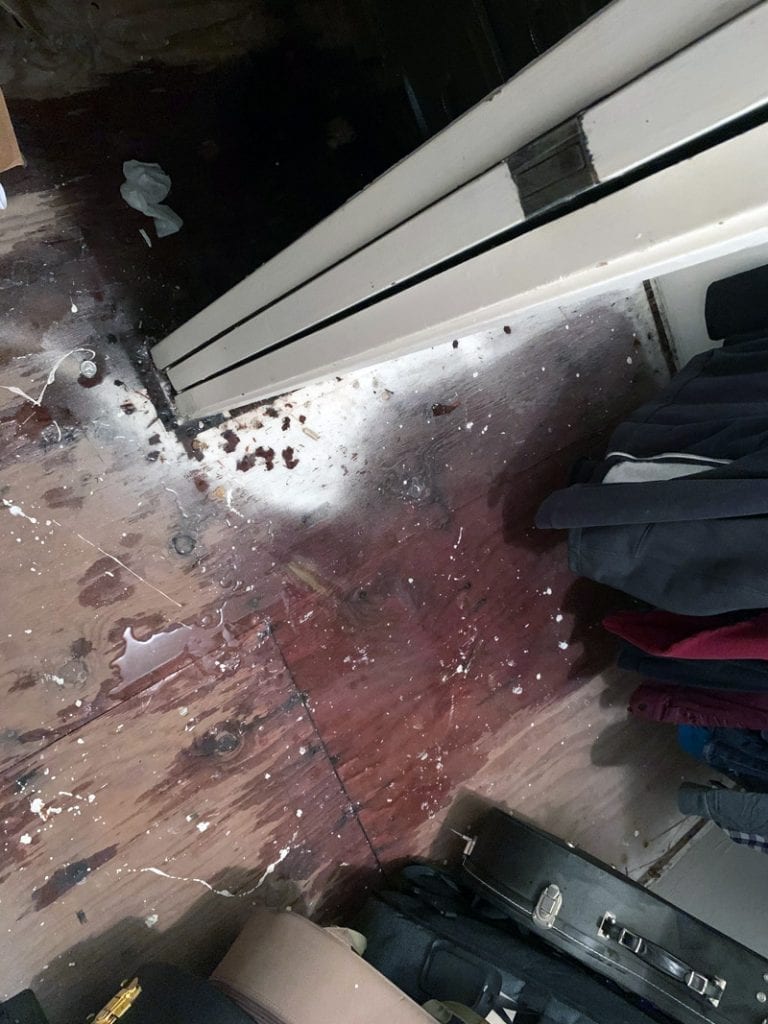Since I’ve set a goal of racing each stage of Tour de Zwift 2020, I knew the Bologna TT route was looming. And I wasn’t happy about it.
Bologna, if you aren’t familiar, is a short course with a painful ending. The first 6km is flat, the final 2km is a steep climb (9.6% average). As a bigger rider who can hold decent wattage, I knew the flat part would be a breeze. The climb? Not so much. I’ve raced here before, and I was under no illusions as to what the final result would be. (Spoiler alert: it certainly wouldn’t include me anywhere near the podium.)
Despite this, I was looking forward to another chance to push myself to the limit and see where I landed in the rankings. My goal, based entirely on rough guesswork: finish in the top 50%. Let’s go!
Waking to Drama
I rolled out of bed at 5am, wanting to give myself plenty of time for a warmup before the race at 6:10am. Using my iPhone flashlight I walked into the closet where I’ve been storing my cycling kits since we moved to our new house. But when I stepped in to grab a pair of bibs, I was greeted by an unwelcome sensation: cold water on my bare feet.
What the… !?
There was standing water on the bare plywood of the closet. (This closet is in our unused master bedroom, the last portion of our house that is officially still under construction)
I quickly did the math in my head. How bad of a man would I be if I grabbed my kit and went upstairs anyway? The answer came back: a very bad man. A very, very bad man.
So I got to work (wearing only briefs, mind you) moving all the clothes and banjos out of the closet for safekeeping. Then I toweled off the floor and turned on an extra Zwifting fan to get air moving so things would dry out. Once that was done it was time to get dressed and starting looking around for the water source: outside, inside, under the sink… where was it coming from?
I couldn’t find the source. And water wasn’t pouring out from anywhere. It could wait another 60-90 minutes. Let’s race!
Warmup
I’d have to hustle to get a warmup in, so I went through my typical pre-race ritual quickly: a piece of caffeine gum and some PR lotion on the legs. Actually, scratch that: I went with two pieces of caffeine gum. Because this was already starting to feel like a long day. I got in a 20-minute, ~7-mile warmup on Tempus Fugit before heading to the start pens.
Bike Choice
Many Zwifters have asked what the best bike frame and wheel setup is for the Bologna TT course. It’s an interesting question without an obvious answer, thanks to the way the course lays out.
If you’re talking about an actual time trial (no drafting), the most aero TT bike and wheelsets are your best choice, because the gains made over the first 6km are more than the seconds lost to a lighter bike up the 2km climb. Additionally, many races on this course are two laps – up to the top of the climb, down to the start, then back up to the top of the climb. In this scenario, aero wins much more so, since you have a steep descent (where aero performs better) and even more flat ground between the two climbs.
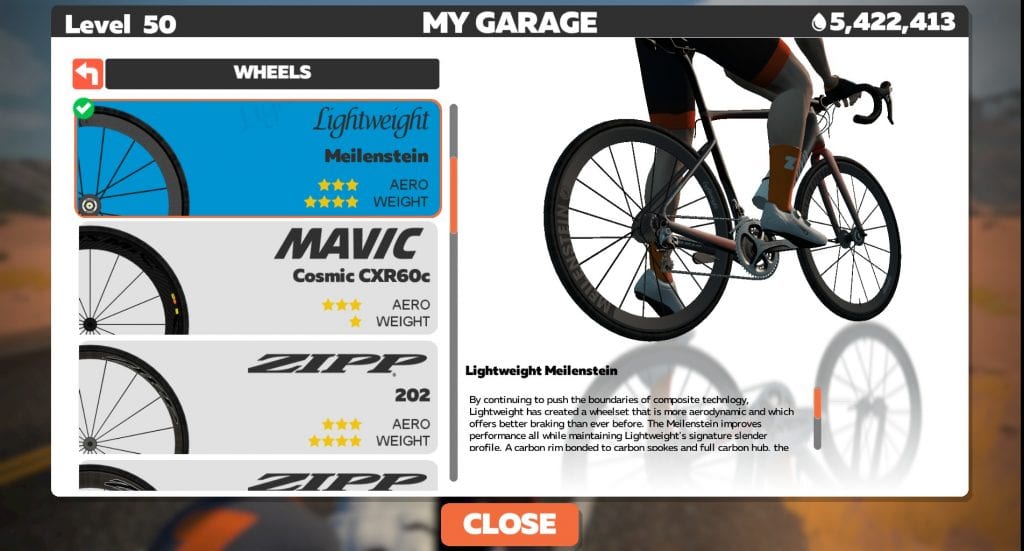
But what if you’re in a drafting race? That’s where things aren’t as clear. Because if you’re sitting in with the pack and staying out of the wind, the gains from having a slightly more aero setup are reduced. But when everything splits apart on the climb, you’ll want the lightest possible setup.
So I went with the Specialized Tarmac Pro frame and Lightweight Meilenstein wheels. It’s the best climbing setup currently on Zwift, and the same setup that posts the best time up the Alpe.
Of course, even with the best climbing bike on Zwift, I wouldn’t be able to hide. This race would come down to watts per kilo and my butt would surely be handed to me on a silver platter. But I still wanted any advantage I could get up that tough climb!
The Start
The start was quite tame – perhaps the easiest Zwift race kickoff I’ve experienced in recent memory. Everyone was conserving for the climb. I only averaged 306 watts in the first minute, and 282 watts over the entire flat portion before the climb began.
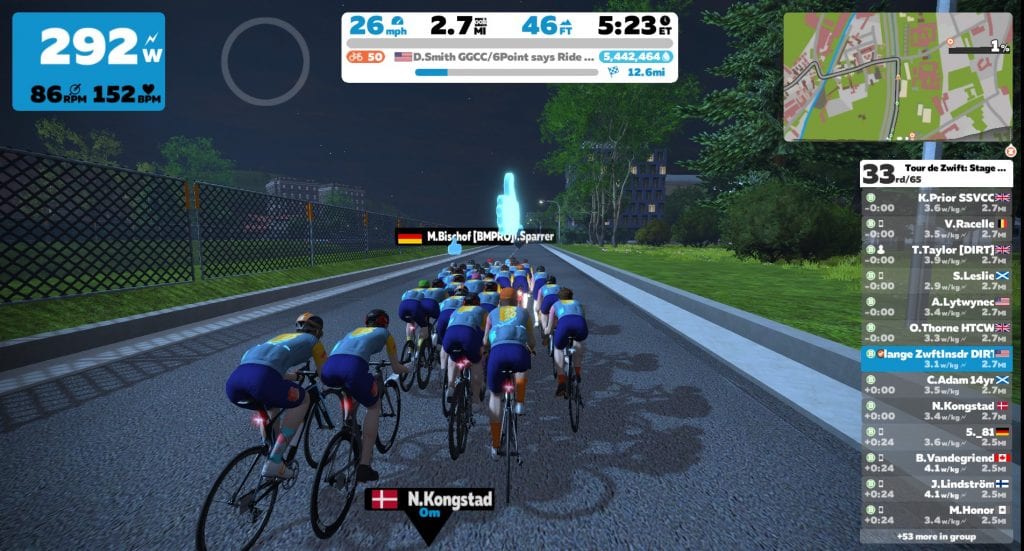
The starting pack of 65 was quickly reduced to 35 by the time we hit the first climb. So I’d made it to the climb in the front group–but how many riders were going to catch me from behind? I was about to find out.
First Climb
The Bologna climb breaks up into three sections for me. First you’ve got the beginning stretch which is fairly steady and steep, ending as you turn left through the brick archway. Then there’s a crazy and steep hairpin which places you on a long, steep straightaway–the steepest part of the climb. Then it’s through another arch to the right and the road gets less steep for the final portion.
I quickly slid to the back of the front group as the climb began, then watched as the chasing group closed the gap behind. Finishing in the top 50% was beginning to feel like an impossible dream – but I kept pushing.
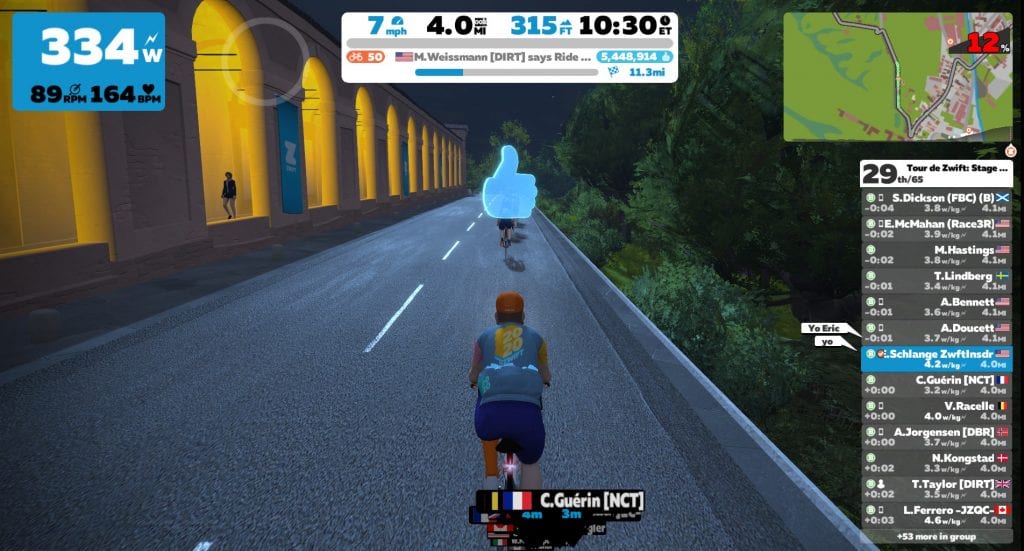
I was able to hold my position around 30th place all the way to the top, averaging 310 watts. Not a great average – perhaps my legs were a bit tired, or I was distracted by my wet closet. Regardless, once the climb was done it was time to supertuck to the bottom.
On some descents, pedaling will get you going faster than the supertuck. But steady, steep descents like Bologna are perfect for the aero tuck, and my legs were happy for the short break.
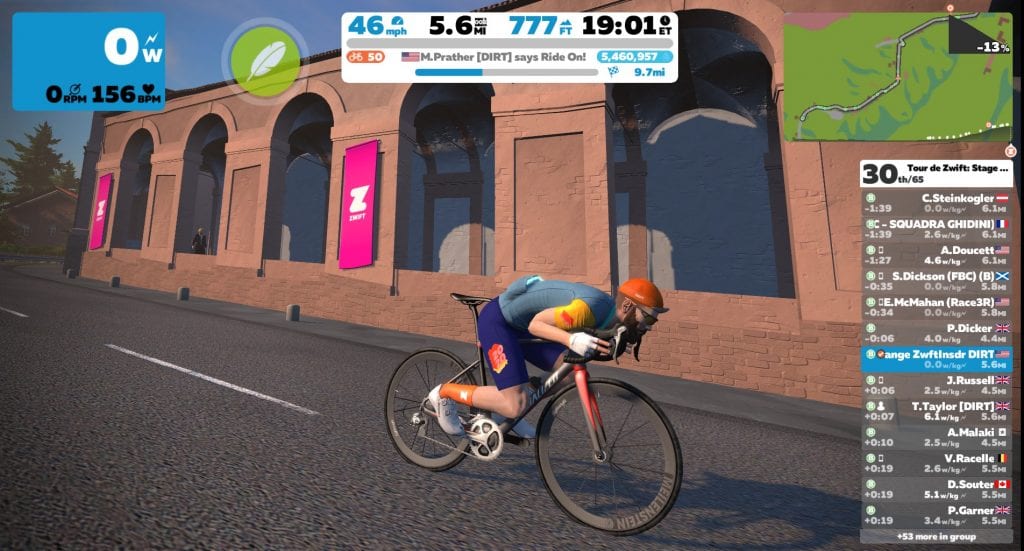
The Middle
When I got to the bottom there were two riders ~15 seconds ahead, and several just 5 seconds behind. I eased up so I could join the riders behind, knowing they would be catching me soon enough, and we would probably have the firepower to catch the riders up the road.
My strategy at this point was to conserve energy for the final climb. Pushing big watts to tow my group up to the next pack on the flats wouldn’t gain me nearly as much time as those watts would up the climb (read “How to Pace Your Best Bologna TT Race” for more on this). So I sat in with my group, and we gobbled up a few riders as we completed the trip back to the start line, turned around, and rode back to the base of the climb.
I only averaged 231 watts on this flat section, making it barely even a zone 3 effort. But that was fine, because we were gaining places, I was recovering, and now it was time for that final climb!
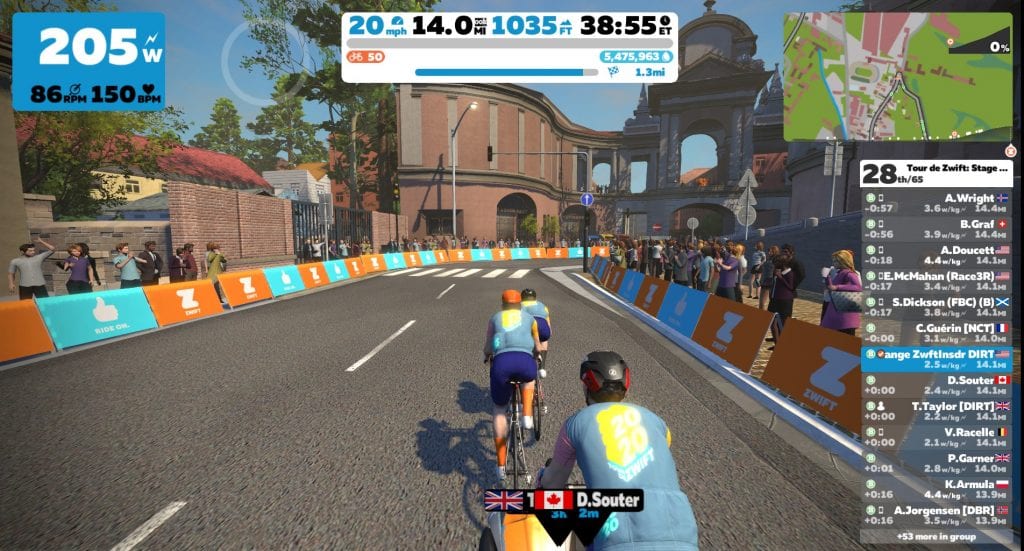
Second Climb (and Finish)
The front of my small group of five riders was 28th place going into the final climb. I needed to finish 32nd or better if I wanted to hit my goal of a top 50% ranking. On top of that, a few riders from the group 15 seconds back were pouring on the watts per kilo as we hit the climb. I knew this would be a fight to the finish!
I tried to keep my breathing even, alternating sitting and standing efforts. (I love the muscle and saddle relief from standing, but it also elevates my heart rate a bit.) When the road turned especially steep on the hairpin heading into the second section I stood and hammered extra hard, because it’s through these steepest portions where extra watts matter most.
In the end, I finished solo, with riders a few seconds ahead and behind. Zwift’s results show me at 31st place–just barely making it under the 50% line. My second climb’s power was just slightly lower than the first climb, 306 watts vs 310.
Also, ZwiftPower, where I usually finish higher in the results than what Zwift shows, bit me in the butt this time around. Out of 36 finishers, I was 20th. So much for 50%!
See my ride on Strava >
See race results on ZwiftPower >
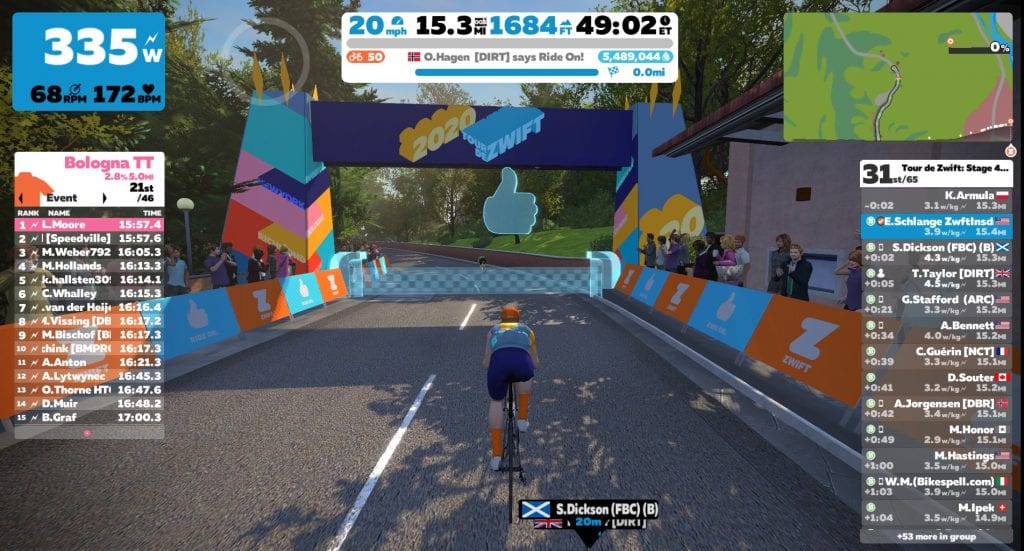
Power to Weight
This race is a perfect example of rider weight affecting speed in cycling. I’m on the larger side when compared to the population of serious cyclists (84kg), so climbs are where I struggle. I’ve got the muscle to hang with pretty strong riders on flat roads, but when the tarmac tilts up, physics kick in. Power to weight ratio becomes more important the steeper the climb gets, so on a steep KOM like Bologna, my ability to hold 3.7w/kg (like I did in the first climb) is going to lose handily to a B rider who can hold 4w/kg or more.
For more on this topic, read “How Rider Weight Affects Speed On Zwift” >
Takeaways
Here are my takeaways from this morning:
- Lightweight bike is definitely the way to go: I think my bike choice was perfect. A more aero bike wouldn’t have moved me any further up the rankings on the flats, and it would have slowed me down on the climb.
- Fewer cookies: if I want to be competitive in any sort of hilly races, I need to increase my power to weight ratio. I can maybe do that by training more (building power), but that’s been a real challenge in the past. The easier solution, I think, is dropping some excess weight. It’s definitely time to shed ~10 pounds.
- Finish the job: if I’d finished moving the clothes out of the closet before the ride, I would have seen that the leak was coming from behind the wall. Pinhole leak in the copper pipe. Plumber friend fixed it a couple of hours later.
What About You?
Did you race TdZ stage 4? What bike setup did you use, and how did it go? Share below!
